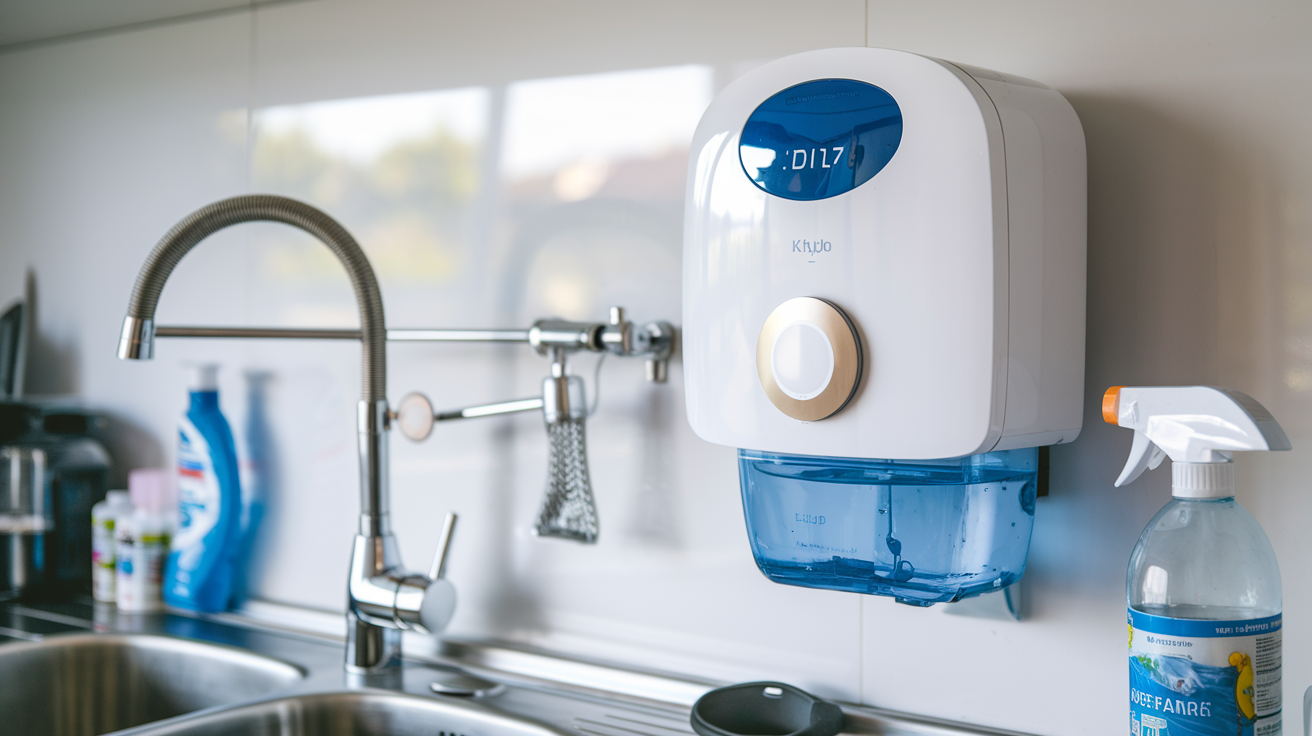Choosing between a standard water filter and a reverse osmosis (RO) filtration system can feel like a tough decision. You want clean, safe water, but which method offers the best solution for your home? From understanding how each system works to the health benefits they provide, this guide will help you make an informed choice. Let’s break down both options and discover which one is the ideal fit for your household.
What is a Water Filter?
At its core, a water filter is a device designed to remove impurities from water by using physical barriers, chemical processes, or biological techniques. There are several types of water filters, each with its own way of filtering contaminants. Some of the most popular types include activated carbon, ceramic, and ultraviolet (UV) filters.
- Activated Carbon Filters: These use activated charcoal to trap particles and chemicals. They are particularly effective at removing chlorine, sediment, and volatile organic compounds (VOCs), which contribute to bad taste and odor.
- Ceramic Filters: These have tiny pores that filter out bacteria and pathogens while allowing clean water to pass through. They’re ideal for situations where biological contamination is a concern.
- UV Filters: These use ultraviolet light to disinfect water by killing bacteria, viruses, and other microorganisms. However, they don’t remove chemical contaminants.
How Does a Water Filter Work?
The process of water filtration can vary depending on the type of filter you use. Activated carbon filters, for example, work by adsorption, where contaminants stick to the surface of the carbon as the water flows through it. Ceramic filters block larger particles like bacteria, and UV filters use light to sterilize pathogens.
Water filters are excellent at removing chlorine, sediment, and other large particles, but they don’t always remove dissolved minerals or heavy metals. Their simplicity and affordability make them a popular choice for improving the taste and safety of tap water.
Benefits of Using a Standard Water Filter
Water filters offer several benefits. For starters, they are easy to install and use, requiring minimal maintenance. They can also significantly improve the taste and odor of water, which is perfect if you have chlorine-heavy tap water. Most standard filters are compact, making them a great option for kitchens with limited space.
Cost Considerations and Maintenance
One of the biggest advantages of a water filter is its cost-effectiveness. Filters can be purchased for as little as $20 to $100, depending on the type and brand. Maintenance typically involves replacing the filter cartridges, which can range from $10 to $50 every few months. Overall, water filters are a low-cost option that still delivers cleaner water for daily use.
Explore Some Best Water Filters For Home

Understanding Reverse Osmosis Filtration
Now, let’s talk about reverse osmosis, often considered the gold standard of water purification. RO systems work by forcing water through a semi-permeable membrane, which allows water molecules to pass but blocks contaminants like lead, arsenic, fluoride, and nitrates.
How Does Reverse Osmosis Work?
In a reverse osmosis system, water is pushed through multiple stages of filtration. The first stage typically involves a pre-filter to remove larger particles like sediment and chlorine. The water then moves to the RO membrane, which is the heart of the system. This membrane blocks up to 99% of dissolved solids, including harmful heavy metals and chemicals. After passing through the membrane, the water goes through a post-filter to catch any remaining particles before reaching your faucet.
What Contaminants Does RO Remove?
Reverse osmosis is highly effective at removing a broad spectrum of contaminants. These include heavy metals (like lead and mercury), chemicals (such as chlorine and fluoride), and even microscopic organisms like bacteria and viruses. The end result is water that is as pure as bottled water—sometimes even purer.
Pros of Using an RO System for Water Purification
The biggest advantage of using a reverse osmosis system is its ability to remove nearly all contaminants, leaving you with ultra-pure water. It’s especially useful in areas where the water supply is highly contaminated or where heavy metals like lead are a concern. Additionally, RO water often tastes cleaner and crisper than water filtered through standard systems.
Typical RO System Costs and Maintenance
Reverse osmosis systems are more expensive than standard water filters. You can expect to pay between $150 and $500 for a good home RO system. Maintenance costs, including replacing the filters and RO membrane, can range from $50 to $100 annually. However, the high level of purification may justify the higher upfront and maintenance costs for those who need it.
Here are some Best RO Filtration System For Homes

Key Differences Between Water Filters and Reverse Osmosis
When comparing water filters to reverse osmosis systems, there are a few key differences that stand out.
Efficiency in Removing Contaminants
Standard water filters do a good job of removing sediment, chlorine, and some bacteria. But when it comes to heavy metals, chemicals, and dissolved solids, reverse osmosis is far superior. RO systems remove up to 99% of contaminants, while most water filters can only handle the larger, more common pollutants.
Water Taste and Quality
RO water is often described as “pure” or “clean” tasting, mainly because it removes more impurities than a standard filter. However, some people prefer the taste of filtered water, as reverse osmosis can strip away beneficial minerals that add to the flavor. For those who want the absolute best-tasting water, a re-mineralizing filter can be added to an RO system to put back healthy minerals.
Filtration Speed and Water Waste
Reverse osmosis systems work more slowly than standard filters and waste a certain amount of water during the process. On average, RO systems waste about 3-4 gallons of water for every gallon of purified water. Standard water filters, on the other hand, do not produce any wastewater and are much faster at delivering filtered water.
Upfront Cost and Long-term Expense
While water filters are cheaper upfront, reverse osmosis systems are a more significant investment. However, they can provide higher quality water over the long term, especially if your tap water contains harmful contaminants. Consider the quality of your water and your long-term health goals when weighing these costs.
Health Benefits: Water Filters vs Reverse Osmosis
The health benefits of each system depend on your water quality and personal health goals.
Health Impacts of Using a Standard Water Filter
Standard water filters improve water quality by removing chlorine and larger particles, which helps reduce exposure to harmful bacteria and improves the taste of the water. For homes with relatively clean tap water, a standard filter may be all you need to maintain good health.
Health Benefits of Reverse Osmosis
Reverse osmosis systems remove nearly all contaminants, including harmful heavy metals like lead and chemicals like fluoride. This makes RO water one of the healthiest options for drinking, especially if you live in an area with poor water quality. However, RO also removes beneficial minerals like calcium and magnesium, which may require a separate re-mineralization step.
Potential Downsides
While reverse osmosis provides ultra-pure water, it can strip away beneficial minerals, leading some to argue that it’s “too pure.” For some, the removal of healthy minerals can be a drawback, but this can be addressed by using a mineral supplement or a re-mineralization filter.

Which System is Right for Your Home?
Choosing between a water filter and a reverse osmosis system depends on your specific water quality needs.
Evaluating Your Water Quality Needs
If your local water supply contains high levels of contaminants like lead or arsenic, a reverse osmosis system is the safer choice. However, if you’re primarily concerned about taste, odor, and chlorine, a standard water filter might be enough.
When to Choose a Water Filter
If your water is already relatively clean and you’re looking for a low-cost, easy-to-use solution to improve taste and odor, a water filter will likely meet your needs. It’s also a good choice for renters or those with smaller households.
We’ve collected some Best Water Filters You can see here.
When to Opt for Reverse Osmosis
If you have a larger household, live in an area with contaminated water, or want the purest drinking water possible, an RO system is the best option. It’s especially helpful for families with young children or those with sensitive health needs.
Installation and Maintenance of Both Systems
Both water filters and reverse osmosis systems are fairly easy to install, but RO systems tend to require more setup.
Water Filter Installation
Most water filters are straightforward to install. Many are simple faucet attachments or under-sink systems that can be set up in minutes. Maintenance typically involves replacing the filter every few months.
Reverse Osmosis Installation
RO systems take more time to install due to their multiple stages and need for a drain line. Many homeowners opt to have them professionally installed. While they require more maintenance than a standard water filter, it’s mostly about replacing the filters and membranes as needed.

Final Verdict: Water Filter or Reverse Osmosis?
At the end of the day, both systems have their place in the world of water filtration.
When One System Outshines the Other
For basic filtration needs, a standard water filter is more affordable and easier to maintain. But if you’re concerned about the quality of your water and want maximum protection from contaminants, a reverse osmosis system is the way to go. Consider your water quality, health goals, and budget to determine which one fits your home.


